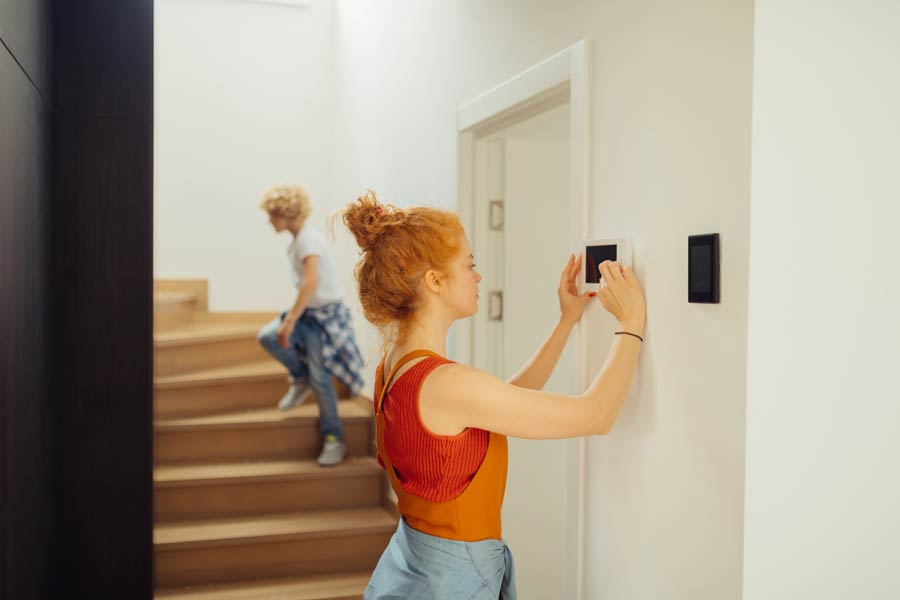Set the right temperature
Dropping the room temperature by one degree will save in heating costs. The easiest way to ensure the correct indoor temperature is to get a thermometer for the different rooms. The correct room temperature is 18–22°C depending on the room space. The recommended room temperatures in draught-free conditions:
- living spaces 20–22°C
- bedrooms 18–20°C
- store rooms 12°C
- garage 5°C
Away from home
If your home is going to be empty for several days, you can easily set the thermostats a few degrees lower. If your bathroom includes an electric comfort heating system, it pays off to turn it off for a longer absence. Make sure that all humid spaces are properly ventilated to let the floor dry during the day.
Underfloor heating in bathrooms
Make sure that you haven’t set the underfloor heating too high. If you are not using any other form of heating in a humid space, underfloor heating is required to prevent moisture damage. In addition to your toes, you can feel the underfloor heating in your purse. In hot weather, you should set your underfloor heating lower than the winter temperature. Heating your bathrooms and other sanitary spaces can easily be the biggest consumer of energy in your home.
Prepare for hot summer weather
In hot summer weather, a heat pump will cool the indoor air nicely. That said, a heat pump can consume a huge amount of energy, so use it in moderation. Automatic cooling may not be required at all if you manage to keep the midday heat out of your home and avoid using heat-generating equipment inside. Remember ventilation and proper settings.
- If your home includes an automatic ventilation system, keep your doors and windows shut during daytime.
- Check that the radiators in your living spaces are turned off or set at a low temperature.
- Cover the windows on the sunny side with curtains or blinds.
- Turn off unnecessary electrical equipment. Avoid heating your oven or indoor sauna.
- If necessary, open a window on the shady side. Take advantage of the cool night air for ventilation.
- Choose an energy-efficient AC device.
Windows
Check the sealing of your doors and windows because roughly a third of the heat in your home escapes through the windows. You will save energy, make your home feel less draughty and reduce the need for maintenance of your door and window structures.
On those rare days the sun comes out on these northern shores, make the most of it. Open your curtains or blinds to let the spring light in and make the most of the sun’s free heating energy.
Ventilating your home with fresh air is a good idea. But if you ventilate for too long in the winter, you will let out heat and increase your heating costs. If you have electric radiators, turn them off while ventilating. A good way is to cross-ventilate by keeping doors or windows open on opposite sides of your home. Just a moment is enough to freshen the air up without making the rooms too cold.
Traffic
Use public trasportation whenever possible. If you have to use your own car, pay attention to preheating the engine. Starting the engine of your car in cold winter weather without preheating it places a burden on the engine and the environment. A cold and frosty car is not safe to drive and it’s not much fun for the driver, either. Preheating your car is a smart move because it improves safety and comfort. You should not plug your car in for the whole night. If the temperature drops below -15°C, one hour will suffice.
Monitor your consumption in Elenia Aina
Monitor your electricity consumption in Elenia Aina. In the free Elenia Aina -service, you can track the effect of the tips on your electricity consumption. At the moment, Elenia Aina is in Finnish only.
